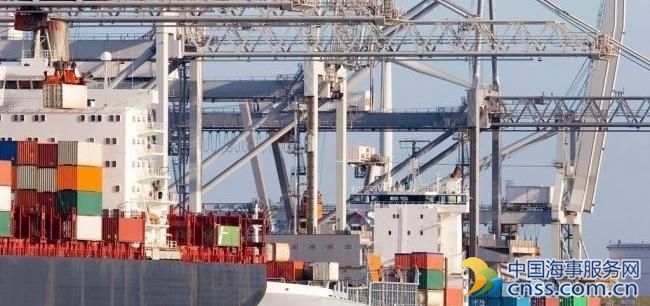Japan readies for LNG bunkering as marine industry turns to cleaner fuels

Japan, the world’s largest LNG importer and accounting for about 35% of global demand, is set to play a significant role in LNG bunkering as the marine industry turns to cleaner fuel options to comply with stricter environmental regulations.
In October 2016, the International Maritime Organization decided to cut global sulfur emission limits for marine fuels from 3.5% to 0.5% by 2020.
Currently, the demand for heavy fuel oils as marine fuel is about 250 million mt/year. Ship operators will have to switch to cleaner, more expensive fuels or invest in emissions cleaning systems. LNG is another option.
Major impediments to the widespread adoption of LNG bunkering have been high infrastructure costs, lack of sufficient enforcement as well as current low crude oil prices.
Another problem is matching the expectations of the buyers and sellers. While sellers are keen to lock in long-term contracts, ship operators, who are already facing challenging market conditions, prefer to buy spot cargoes.
LNG could be a viable and cheaper alternative as the price for middle distillates rises, sources said.
Besides tackling sulfur emissions, LNG addresses other environmental aspects too.
It has no detectable sulfur, and LNG-fueled vessels emit lower particle and nitrogen oxide than those using marine fuels.
“The volume of fuel oil bunkering, which has to be replaced by low sulfur fuel oil is huge. It is 2 million b/d. Almost equal to… or a little bit less than Iran’s oil production. But it is huge. How can it be replaced in three years?” Fereidun Fesharaki, chairman of Facts Global Energy, said at an energy event in Tokyo on February 9.
Blending diesel and fuel oil to create 5,000 ppm sulfur fuel was extremely difficult, he said, adding that compliance would be impossible.
“Not in 2020, not in 2023, 2024, 2025. In that process, there will be more LNG bunkering definitely … it is a very, very big challenge,” Fesharaki said.
Demand from LNG will also be boosted by the lower prices of natural gas in the future, Robin Meech, managing director at Marine & Energy Consulting, said, adding that global annual demand for LNG bunkers could rise from less than 1 million mt currently to as high as 8 million mt by 2025.
LNG BUNKERING IN JAPAN
Japan carried out a feasibility study for the development of an LNG bunkering hub at the port of Yokohama, on the Pacific side as it serves as a bunkering base on the Asian side of the Pacific route.
A report by Japan’s Ministry of Land, Infrastructure, Transport, and Tourism in December set a three-phase road map for the development of an LNG bunkering base.
According to the report, Phase I has already started with the introduction of truck-to-ship bunkering.
“The optimization has been realized since November 2016,” the report said. Phase II comprises ship-to-ship bunkering by using the LNG terminal in Tokyo bay (Sodegaura terminal) where the required facilities are already in place for supplying LNG to ships by 2020.
Phase III will strengthen ship-to-ship supply capacity by introducing new LNG supply system and another bunkering ship at Yokohama once demand reached a certain scale, it said.
In October 2016, the ministry became part of an international focus group to co-operate on LNG bunkering. The group comprises the ports of Singapore, Rotterdam, Antwerp, Zeebrugge, Jacksonville, the Norwegian Maritime Authority, and South Korea’s Ulsan Port Authority.
“We think the market [for LNG bunkering] will be surely growing, seeing strong environmental regulations … Yes, Japan can be one of the most important hubs,” a spokesman at NYK Line said.
The Japanese shipping line said on Wednesday that it, together with ENGIE, Fluxys and Mitsubishi Corporation, has taken delivery of ENGIE Zeebrugge, the first purpose built LNG bunkering vessel.
A number of other vessels that NYK could use for LNG bunkering are also under study. “Details are not been decided though, study is on-going,” a company spokesman said.
Mitsui O.S.K. Lines, another Japanese shipper, said last month that it had reached an agreement to launch a joint study of an LNG-fueled Capesize bulker with five other companies — BHP Billiton, DNV GL, Rio Tinto, Shanghai Merchant Ship Design and Research Institute and Woodside Energy.
“The MOL Group continually takes a proactive approach to developing and adopting technologies that contribute to reducing environmental impact and enhancing safe operation, while providing safe and reliable transport services,” it said in a statement in January.
Source: Platts
HEADLINES
- Do shipping markets want Biden or Trump for the win?
- All 18 crew safe after fire on Japanese-owned tanker off Singapore
- Singapore launching $44m co-investment initiative for maritime tech start-ups
- Cosco debuts Global Shipping Industry Chain Cooperation Initiative
- US warns of more shipping sanctions
- China continues seaport consolidation as Dalian offer goes unconditional